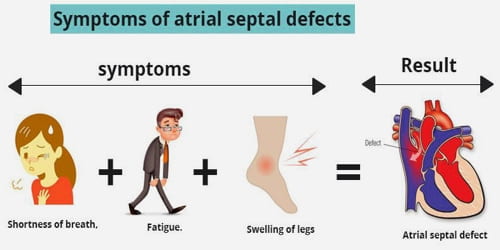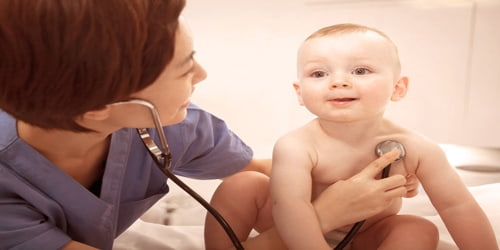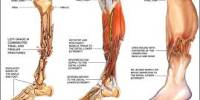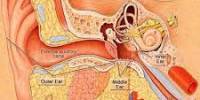Atrial septal defect (Symptoms, Diagnosis, and Treatment)
Definition: Atrial septal defect (ASD) is a birth defect of the heart in which blood flows between the atria (upper chambers) of the heart. This defect allows oxygen-rich blood to leak into the oxygen-poor blood chambers in the heart. ASD is a defect in the septum between the heart’s two upper chambers (atria). The septum is a wall that separates the heart’s left and right sides.
A hole can vary in size and may close on its own or may require surgery. An atrial septal defect is one type of congenital heart defect. Congenital means present at birth. However, a hole in the septum called the foramen ovale allows blood from the right atrium to enter the left atrium during fetal development. This opening allows blood to bypass the nonfunctional fetal lungs while the fetus obtains its oxygen from the placenta.
The heart is divided into four hollow chambers, two on the right and two on the left. To pump blood throughout the body, the heart uses its left and right sides for different tasks. Normally, the left side of the heart only pumps blood to the body, and the right side of the heart only pumps blood to the lungs. In a child with ASD, blood can travel across the hole from the left upper heart chamber (left atrium) to the right upper chamber (right atrium) and out into the lung arteries.
These types of heart defects also are thought to be caused by a combination of genes and other risk factors, such as things the mother comes in contact with in the environment or what the mother eats or drinks or the medicines the mother uses.

Signs and Symptoms of Atrial septal defect: The causes of heart defects such as atrial septal defect among most babies are unknown. Many babies born with atrial septal defects don’t have associated signs or symptoms. In adults, signs or symptoms may begin around age 30, but in some cases, signs and symptoms may not occur until decades later.
Atrial septal defect signs and symptoms may include:
- Shortness of breath, especially when exercising
- Fatigue
- Swelling of legs, feet or abdomen
- Heart palpitations or skipped beats
- Stroke
- Heart murmur, a whooshing sound that can be heard through a stethoscope
These could be signs or symptoms of heart failure or another complication of congenital heart disease.

Diagnosis and Treatment of Atrial septal defect: An atrial septal defect may be diagnosed during pregnancy or after the baby is born. In many cases, it may not be diagnosed until adulthood.
Most individuals with a significant ASD are diagnosed in utero or in early childhood with the use of ultrasonography or auscultation of the heart sounds during the physical examination. Adults with an uncorrected ASD present with symptoms of dyspnea on exertion (shortness of breath with minimal exercise), congestive heart failure, or cerebrovascular accident (stroke). They may be noted on routine testing to have an abnormal chest X-ray or an abnormal ECG and may have atrial fibrillation. If the ASD causes a left-to-right shunt, the pulmonary vasculature in both lungs may appear dilated on chest X-ray, due to the increase in pulmonary blood flow.
During pregnancy, there are screening tests (prenatal tests) to check for birth defects and other conditions. An atrial septal defect might be seen during an ultrasound (which creates pictures of the body), but it depends on the size of the hole and its location. If an atrial septal defect is suspected, a specialist will need to confirm the diagnosis.
An MRI is a technique that uses a magnetic field and radio waves to create 3-D images of people’s heart and other organs and tissues within their body. The doctor may request an MRI if echocardiography can’t definitively diagnose an atrial septal defect. Computerized tomography (CT) scans. A CT scan uses a series of X-rays to create detailed images of people’s heart. A CT scan may be used to diagnose an atrial septal defect if echocardiography hasn’t definitely diagnosed an atrial septal defect.
Treatment for an atrial septal defect depends on the age of diagnosis, the number of or seriousness of symptoms, size of the hole, and presence of other conditions. Sometimes surgery is needed to repair the hole. Sometimes medications are prescribed to help treat symptoms. There are no known medications that can repair the hole.
Follow-up care depends on the type of defect and whether other defects are present. Repeated echocardiograms are done after hospital discharge, one year later and then as requested by people or their child’s doctor. For simple atrial septal defects closed during childhood, only occasional follow-up care is generally needed.
As a group, atrial septal defects are detected in one child per 1500 live births. PFOs are quite common (appearing in 10–20% of adults), but when asymptomatic go undiagnosed. ASDs make up 30 to 40% of all congenital heart diseases that are seen in adults.
The ostium secundum atrial septal defect accounts for 7% of all congenital heart lesions. This lesion shows a male: female ratio of 1:2.
Information Source:
















